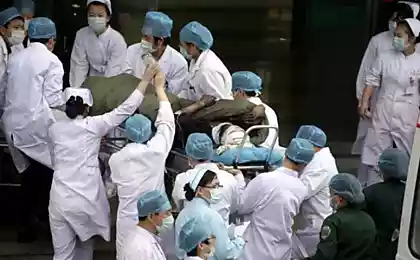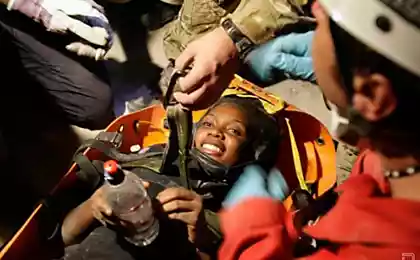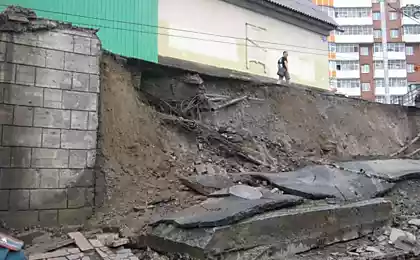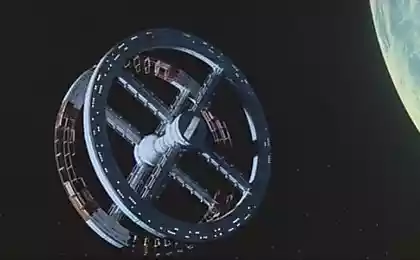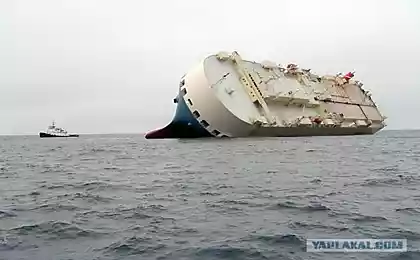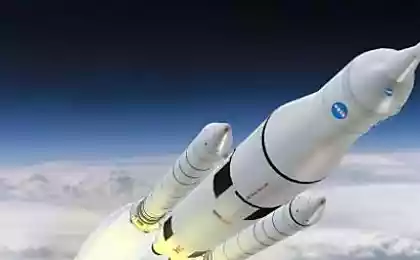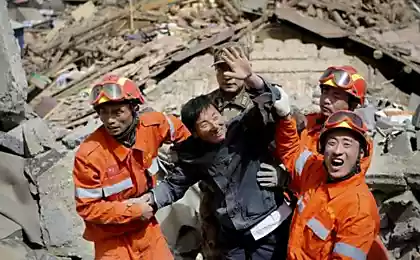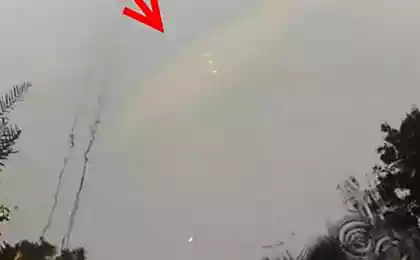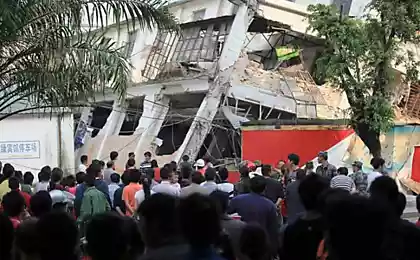989
Space savers
In continuation of the "space" theme real story about real people
The Soviet operation to rescue the dead space station
This story happened in 1985, but later gradually forgotten. As the years passed - many details have been distorted, something that has been invented. Even those who first told about these events, obvious mistakes allowed. Operation of "Soyuz-13" to save space station "Salyut-7" was impressive attempt repairs in space. Writer Nikolai Belakovsky gathered all the facts together and ready for the first time to give us a full account of the events.
Vladimir Dzhanibekov dark and getting cold. He has a flashlight, but no gloves: to work with them more difficult, and it is necessary to handle quickly. Hands are cold, but it does not matter. Water reserves are limited and his team if they are not repaired the station in time to warm up she managed their drinking capacity, they will have to leave it and go home. However, to prevent this, they can not be too many means to this station. Slowly the sun sets. Work with a lantern one uncomfortable, so Janibekov returns to the ship that brought them here, to get warm and wait until they fly by the night side of the Earth.
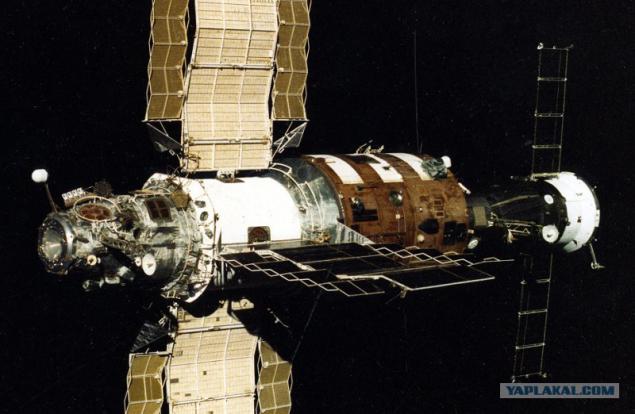
He is trying to save the "Salyut-7", the latest in a series of problem, but the more successful Soviet space stations. Its predecessor - the "Salyut-6" finally returned stations councils title the longest manned space programs, breaking the 84-day record set in 1974 by the American Skylab for 10 days. Further flights extended it to 185 days. And after the launch of the "Salyut-7" into orbit in April 1982, the first flight it updated the record to 211 days. The station began life without any serious problems. [4]
The situation changed quickly. February 11, 1985, at a time when the "Salyut 7" in orbit, controlled by autopilot in anticipation of his next team, the Mission Control Center detected a problem. Telemetry reported ripple current in electrical equipment, which led to the triggering of the overload protection and disconnect the electrical circuits of the main transmitter. Redundant radio enabled automatically eliminate emerging threats toll station. Tired at the end of his 24-hour shift, operators PCO advised to contact experts from the design bureau, responsible for the creation of electrical and radio. Experts had to analyze the situation, to provide a report and recommendations, but at that time the station was fine and the next shift was ready to step up vigil. [9]
Do not wait until the experts arrive, perhaps, from the very beginning without bothering to call them, the operators decided to restart the next shift the main transmitter. They suggested that the overload protection is triggered accidentally, but even if not, it was still active, and if the problem really is - would work again. Operators acting contrary to established traditions and procedures of the department, gave the command to re-activate the main radio. At the same time on the station flashed a series of short circuits, which put out of action, not only transmitters and receivers. February 11, 1985, at 13:20:51 Moscow time "Salyut-7" paused and stopped responding Center. [8] [9]
What to do?
This situation has put the operators flight in an awkward position. One of the options available to quit was just "Salyut-7" and wait for his successor - Mir space station will be available for programs of human activities in space. Launch of the World had had to take place within a year, but wait for him meant not only to delay the space program for a year. It would also lead to the fact that the entire volume of research and engineering test, scheduled for the "Salyut-7" would have remained unfulfilled. Moreover, admission of defeat would be a shame for the Soviet space program, especially against the backdrop of a painful number of previous failures series "Salute" and the obvious success of Americans with their program Space Shuttle.
There was only one option: to send a repair team to the station to fix it from the inside by hand. However, this idea could easily result in another failure. Standard procedures for docking with the space station were fully automated and very much relied on the information on the precise orbital and spatial coordinates that are sent to the station itself. In those rare cases when automatic and did not fire on the approach required manual docking, all the main difficulties encountered in hundreds of meters from the station. The question arises: "How to dock with the station sleeping?" [9]
Lack of communication has created another problem: check the status of on-board systems was impossible. The station has been designed for stand-alone operations, and in the current situation it was the maximum number of failures with which she could handle it, after which the required human intervention. At the time of arrival of the repair team could she be in good condition, requiring repairs only replacing the damaged transmitters. Perhaps her there was a fire or a collision with space debris occurred depressurization. It could happen anything, but it was impossible to know for sure. [3]
Officially, the general public knows nothing about whether to hold the discussion and consideration of options to address the situation at the level of senior management. "We know," but that the Soviet leadership decided to carry out repair operations. This meant that it was necessary to develop all the procedures for docking with a clean slate, hoping beyond that and also the fact that in the absence of communication on board the station has not appeared any fault, because otherwise the repair team could not cope with the task. It was a bold decision. "Joining with nekooperiruemym object»
The primary objective of the repair team was to determine how it could get to the station. In more favorable conditions, "Union" (3-seater vehicle, which was used to deliver astronauts to the station and back), barely hitting the orbit would get information about the station from the MCC, long before she got to the field of view of the crew . Messages would contain information about the orbit of the space station, which would give the ship flies to calculate the orbit rendezvous. As soon as the distance between the ship and the station will reach 20-25 km, they would establish a direct connection and automatic system would have brought them together, completing the dock. [3]
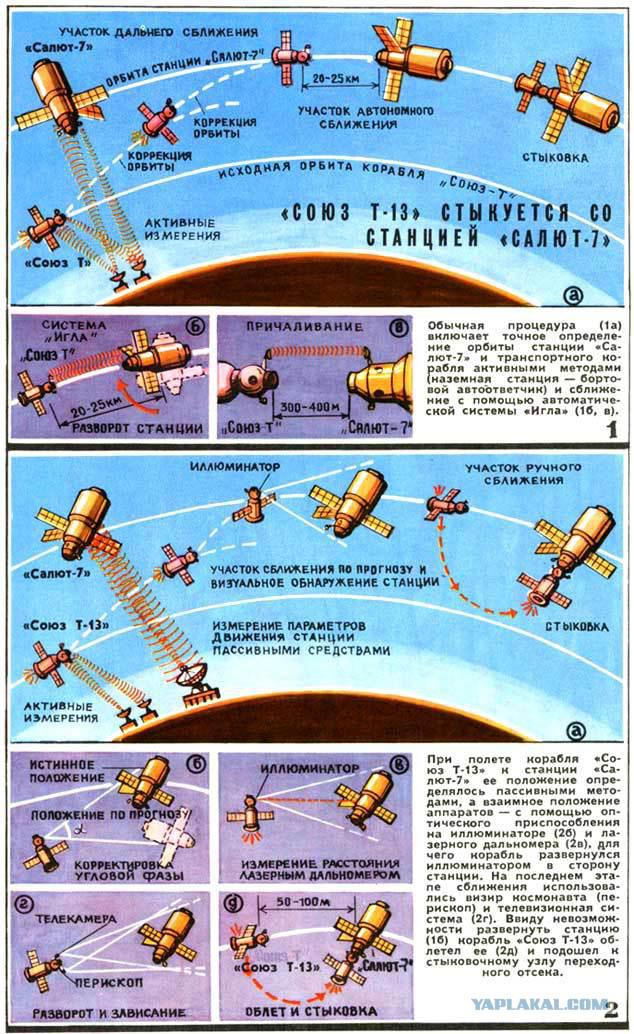
The first part shows the normal procedure of rendezvous and docking the "Union", the second - its amended version, which used the "Soyuz T-13." Note that in Figures 2b and 2c ship flying sideways, in order to see the station through the porthole.
Pilots' Union "trained manual docking, but the malfunction of automatic system is rare. The most serious incident occurred in June 1982, when a computer failure interrupted the process of automatic rendezvous "Soyuz T-6" for 900 meters to the station. Vladimir Janibekov immediately took over the management and successfully docked its "Union" to "Salyut-7" by as much as 14 minutes before the scheduled time. [4] It is natural that Janibekov was a prime candidate for the role of pilots in any way possible mission to save the "Salyut-7».
It was necessary to develop a series of completely new connecting technology, which was done within the project, which was named "Joining with nekooperiruemym object" [5] The orbit of the station to be measured with the help of ground-based radar to the transfer of this information to the "Union", which will be on it Based on planning a course of rapprochement. The aim was to bring the ship to a distance of 5 km from the station, from which the manual docking was considered theoretically possible. [3] The engineers responsible for the development of new treatments have come to the conclusion that the chances of success of the operation, after making appropriate modifications to the "Union", is 70-80%. [2] [3] The Soviet government took the risk, considering the station is too valuable to just let it loose orbit in the absence of management.
"Union" began to modify. Automatic docking system should be removed, by setting a laser range finder to the cockpit to help the team to determine the distance and speed of approach. The team also should provide night vision devices in case if they will be joined on the night side. The seat third crew member was taken, and additional supplies such as food, and that later would be vital water were brought on board. Weight savings from the removal of the automatic system and the third place was used to fill the fuel tank to the highest possible level. [1], [3], [11] who will fly to the operation?
When it came to selecting the team for the flight, it was necessary to consider two important points. First of all, the pilot had to have experience to implement the manual docking in orbit, and not only on the simulator. Secondly, the on-board engineer should have known of the "Salyut-7" is very good. Only three cosmonauts previously performed manual docking in orbit: Leonid Kizim Yuri Malyshev and Vladimir Janibekov. Kizim only recently returned from a long mission to "Salyut-7" and is still undergoing rehabilitation after this flight, which excluded him from the list of possible candidates. Malyshev had little experience flying. He also held training for spacewalk that would take later in the course of the operation in order to improve solar panel station if its restoration would have passed successfully. [1]
There was only Janibekov, who spent 4 space flight lasting from one to two weeks, while trained for long-term operations and spacewalks. However, doctors have banned him from participating in long flights. Dzhanibekova, which was the first in the list of the main candidates for the role of captain, quickly passed into the hands of doctors who after a few weeks of observation and inspection, made it to the flight, the duration of which was not to exceed 100 days. [1]
List the role of flight engineer was even shorter, and consisted of only one person. Viktor Savinykh to do this one mission to "Salyut-6" length of 74 days. In the course of the operation, it provides work Dzhanibekova and the first cosmonaut of Mongolia, who visited the station in the "Soyuz-39". Among other things, he has trained for the next long-term operation in the "Salyut-7", the launch of which was scheduled for May 15, 1985. [1]
By mid-March the crew had been approved. Vladimir Janibekov and Viktor Savinykh were chosen in an attempt to carry out the boldest and most complex at the time the repair work in the open space. [1]
Let's go!
June 6, 1985, almost four months after losing contact with the station "Soyuz T-13" was launched with the commander and flight engineer Vladimir Dzhanibekov Viktor Savinykh on board. [1], [6] After two days of flight station came into view.
During the approach to the station from the ship carried live video, which was broadcast in the Control Center. That is one of the images obtained when:
Operators MCC noticed something was wrong: a solar panel plant were not parallel. This indicates a serious fault in a system that orients the solar panels to the sun and cause for concern about the state of the entire electrical system of the station. [1]
The crew continued the approach.
B. Janibekov: "The distance of 200 meters, includes an engine on acceleration. Convergence is at a low speed, in the range 1 to 5 m / sec. The rotational speed of the station in the normal range, it is almost zastabilizirovalas. Here we hang over it, turn around ... Well, now we are going to suffer a little bit because of the sun we are not doing well ... Here's a picture has improved. Crosses are combined. Mismatch of the ship and the station admission control is ... OK, stub forward speed ... touch ... »
Slowly and quietly the crew of the "Union" was flying toward the front docking port of the station.
V. Savinykh: "There is a touch. There mehzahvat ».
Successful docking station was a major victory for the first time in history has shown that is possible to approach and dock with almost any space object. However, it was too early to celebrate: the command is not received from the station any physical or electronic confirmation of the dock. One of the major concerns that in the absence of communication at the station had serious problems are quickly becoming a reality.
The lack of information on the screens of the ship on the pressure inside the station has raised fears that it appears to be leaking, but the team continued to work cautiously. The first step should try to equalize the pressure on the ship and at the station, as far as possible. [1] [3]
The picture Salyut-7
"Salute", as seen by the crew of an approaching "Soyuz T-13».
Note that the solar panels are inclined at different angles.
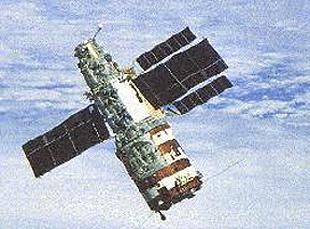
As the old, abandoned house
All Soviet and Russian space stations, starting with the "Salyut-6" had at least 2 docking port front, which connects with the transfer compartment and the back, which connects with the main compartment station. The rear unit also had a message from the fuel tanks station, which made it possible to fill them with the cargo ship "Progress", which flies to deliver goods to the station. Team docked to the front assembly and start equalize pressure. "Salyut-7" was designed based on the "Salyut-6", and had with him a similar design scheme is given below:
Posted in [mergetime] 1412059440 [/ mergetime]
The diagram shows the docking of "Soyuz" (left) with "Salyut-6". The ship is connected with the transfer compartment (G), which hatches are in section H on "Union" and Section C on the station. Since the 6-generation "Salute", Section D has been modernized: it was not only the mechanical department, and the docking station. "Soyuz" are able to dock with the two nodes, whereas the ships "Progress" can only be joined with the rear.
To get to the main branch of the station, which is called the "working bay", the crew had to be overcome, in total, 3 of the hatch. First, they had to open the hatch of the ship and, through a small hole in the hatch stations equalize pressure between the ship and the transfer compartment station. By doing this and by checking the transition compartment, they could start with the hatch separating the transition and working compartments of the station.
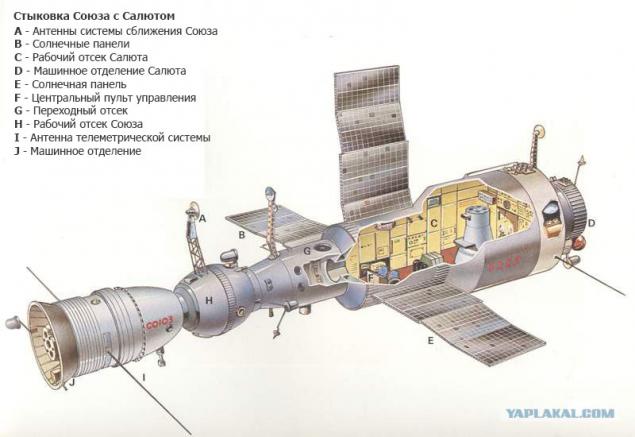
Earth: "Open the hatch of the ship».
V. Savinykh: "Luke ripped».
Earth: "Was it hard? What temperature is the hatch? »
B. Janibekov "Luke sweaty. Another do not see anything here ».
Plot: "Accepted. Carefully loosen the plug 1-2 turns and quickly go to the home slot. Prepare all of the closure of the hatch of the ship. Volodya (Dzhanibekov), you open one turn and hear hissing or sizzling ».
B. Janibekov "I Stronul. A little hisses. But not so rapidly ».
Earth: "Well, a little bit more Turn your».
B. Janibekov: "Well, he turned away. Hissed. Aligned division ».
Earth: "Close the hatch».
V. Savinykh: "Luke is closed».
Earth: "Let us look for another three minutes, and then we'll move on».
B. Janibekov "Pressure unchanged ... begins to level off. It's too slow ».
Earth: "What! We have yet to fly and fly. So hurry ».
B. Janibekov "Pressure 700 mm. Drop formed in the 20-25 mm. Now we open the hatch. Opened ».
Earth: "Stir plug».
B. Janibekov "Now».
Earth: "Burrs cork? Jam stir. Maybe she will still be poison, and thus align ».
B. Janibekov: "Quickly, yes?»
Plot: "Of course».
B. Janibekov: "The issue we decide quickly. That familiar smell of home ... So, I open a little hole. Here now a little brighter things went ».
Earth: "Burrs?»
B. Janibekov: "Yes. Pressure 714 mm ».
Earth: "There is Leakage?»
B. Janibekov: "Go».
Earth: "If you're ready for the opening of the hatch station can begin».
B. Janibekov: "We are ready. I open the hatch. Op and opened ».
Earth: "What do you see?»
B. Janibekov "No. I mean - the lock opened. Seychac trying to open the hatch. Go ».
Plot: "The first impression? The temperature of what? »
B. Janibekov "kolotun, brothers!»
At this time the astronauts began to realize the seriousness of the situation. The electrical system has lost power stations, causing the system temperature control is disabled. This means not only the freezing vital resources such as water, but also that all station system were exposed to temperatures at which they operate by definition could not. They were not even sure that the stay aboard the station was safe.
Earth: "It's cold much?»
B. Janibekov "Yes».
Web.
I think so.
The Soviet operation to rescue the dead space station
This story happened in 1985, but later gradually forgotten. As the years passed - many details have been distorted, something that has been invented. Even those who first told about these events, obvious mistakes allowed. Operation of "Soyuz-13" to save space station "Salyut-7" was impressive attempt repairs in space. Writer Nikolai Belakovsky gathered all the facts together and ready for the first time to give us a full account of the events.
Vladimir Dzhanibekov dark and getting cold. He has a flashlight, but no gloves: to work with them more difficult, and it is necessary to handle quickly. Hands are cold, but it does not matter. Water reserves are limited and his team if they are not repaired the station in time to warm up she managed their drinking capacity, they will have to leave it and go home. However, to prevent this, they can not be too many means to this station. Slowly the sun sets. Work with a lantern one uncomfortable, so Janibekov returns to the ship that brought them here, to get warm and wait until they fly by the night side of the Earth.

He is trying to save the "Salyut-7", the latest in a series of problem, but the more successful Soviet space stations. Its predecessor - the "Salyut-6" finally returned stations councils title the longest manned space programs, breaking the 84-day record set in 1974 by the American Skylab for 10 days. Further flights extended it to 185 days. And after the launch of the "Salyut-7" into orbit in April 1982, the first flight it updated the record to 211 days. The station began life without any serious problems. [4]
The situation changed quickly. February 11, 1985, at a time when the "Salyut 7" in orbit, controlled by autopilot in anticipation of his next team, the Mission Control Center detected a problem. Telemetry reported ripple current in electrical equipment, which led to the triggering of the overload protection and disconnect the electrical circuits of the main transmitter. Redundant radio enabled automatically eliminate emerging threats toll station. Tired at the end of his 24-hour shift, operators PCO advised to contact experts from the design bureau, responsible for the creation of electrical and radio. Experts had to analyze the situation, to provide a report and recommendations, but at that time the station was fine and the next shift was ready to step up vigil. [9]
Do not wait until the experts arrive, perhaps, from the very beginning without bothering to call them, the operators decided to restart the next shift the main transmitter. They suggested that the overload protection is triggered accidentally, but even if not, it was still active, and if the problem really is - would work again. Operators acting contrary to established traditions and procedures of the department, gave the command to re-activate the main radio. At the same time on the station flashed a series of short circuits, which put out of action, not only transmitters and receivers. February 11, 1985, at 13:20:51 Moscow time "Salyut-7" paused and stopped responding Center. [8] [9]
What to do?
This situation has put the operators flight in an awkward position. One of the options available to quit was just "Salyut-7" and wait for his successor - Mir space station will be available for programs of human activities in space. Launch of the World had had to take place within a year, but wait for him meant not only to delay the space program for a year. It would also lead to the fact that the entire volume of research and engineering test, scheduled for the "Salyut-7" would have remained unfulfilled. Moreover, admission of defeat would be a shame for the Soviet space program, especially against the backdrop of a painful number of previous failures series "Salute" and the obvious success of Americans with their program Space Shuttle.
There was only one option: to send a repair team to the station to fix it from the inside by hand. However, this idea could easily result in another failure. Standard procedures for docking with the space station were fully automated and very much relied on the information on the precise orbital and spatial coordinates that are sent to the station itself. In those rare cases when automatic and did not fire on the approach required manual docking, all the main difficulties encountered in hundreds of meters from the station. The question arises: "How to dock with the station sleeping?" [9]
Lack of communication has created another problem: check the status of on-board systems was impossible. The station has been designed for stand-alone operations, and in the current situation it was the maximum number of failures with which she could handle it, after which the required human intervention. At the time of arrival of the repair team could she be in good condition, requiring repairs only replacing the damaged transmitters. Perhaps her there was a fire or a collision with space debris occurred depressurization. It could happen anything, but it was impossible to know for sure. [3]
Officially, the general public knows nothing about whether to hold the discussion and consideration of options to address the situation at the level of senior management. "We know," but that the Soviet leadership decided to carry out repair operations. This meant that it was necessary to develop all the procedures for docking with a clean slate, hoping beyond that and also the fact that in the absence of communication on board the station has not appeared any fault, because otherwise the repair team could not cope with the task. It was a bold decision. "Joining with nekooperiruemym object»
The primary objective of the repair team was to determine how it could get to the station. In more favorable conditions, "Union" (3-seater vehicle, which was used to deliver astronauts to the station and back), barely hitting the orbit would get information about the station from the MCC, long before she got to the field of view of the crew . Messages would contain information about the orbit of the space station, which would give the ship flies to calculate the orbit rendezvous. As soon as the distance between the ship and the station will reach 20-25 km, they would establish a direct connection and automatic system would have brought them together, completing the dock. [3]

The first part shows the normal procedure of rendezvous and docking the "Union", the second - its amended version, which used the "Soyuz T-13." Note that in Figures 2b and 2c ship flying sideways, in order to see the station through the porthole.
Pilots' Union "trained manual docking, but the malfunction of automatic system is rare. The most serious incident occurred in June 1982, when a computer failure interrupted the process of automatic rendezvous "Soyuz T-6" for 900 meters to the station. Vladimir Janibekov immediately took over the management and successfully docked its "Union" to "Salyut-7" by as much as 14 minutes before the scheduled time. [4] It is natural that Janibekov was a prime candidate for the role of pilots in any way possible mission to save the "Salyut-7».
It was necessary to develop a series of completely new connecting technology, which was done within the project, which was named "Joining with nekooperiruemym object" [5] The orbit of the station to be measured with the help of ground-based radar to the transfer of this information to the "Union", which will be on it Based on planning a course of rapprochement. The aim was to bring the ship to a distance of 5 km from the station, from which the manual docking was considered theoretically possible. [3] The engineers responsible for the development of new treatments have come to the conclusion that the chances of success of the operation, after making appropriate modifications to the "Union", is 70-80%. [2] [3] The Soviet government took the risk, considering the station is too valuable to just let it loose orbit in the absence of management.
"Union" began to modify. Automatic docking system should be removed, by setting a laser range finder to the cockpit to help the team to determine the distance and speed of approach. The team also should provide night vision devices in case if they will be joined on the night side. The seat third crew member was taken, and additional supplies such as food, and that later would be vital water were brought on board. Weight savings from the removal of the automatic system and the third place was used to fill the fuel tank to the highest possible level. [1], [3], [11] who will fly to the operation?
When it came to selecting the team for the flight, it was necessary to consider two important points. First of all, the pilot had to have experience to implement the manual docking in orbit, and not only on the simulator. Secondly, the on-board engineer should have known of the "Salyut-7" is very good. Only three cosmonauts previously performed manual docking in orbit: Leonid Kizim Yuri Malyshev and Vladimir Janibekov. Kizim only recently returned from a long mission to "Salyut-7" and is still undergoing rehabilitation after this flight, which excluded him from the list of possible candidates. Malyshev had little experience flying. He also held training for spacewalk that would take later in the course of the operation in order to improve solar panel station if its restoration would have passed successfully. [1]
There was only Janibekov, who spent 4 space flight lasting from one to two weeks, while trained for long-term operations and spacewalks. However, doctors have banned him from participating in long flights. Dzhanibekova, which was the first in the list of the main candidates for the role of captain, quickly passed into the hands of doctors who after a few weeks of observation and inspection, made it to the flight, the duration of which was not to exceed 100 days. [1]
List the role of flight engineer was even shorter, and consisted of only one person. Viktor Savinykh to do this one mission to "Salyut-6" length of 74 days. In the course of the operation, it provides work Dzhanibekova and the first cosmonaut of Mongolia, who visited the station in the "Soyuz-39". Among other things, he has trained for the next long-term operation in the "Salyut-7", the launch of which was scheduled for May 15, 1985. [1]
By mid-March the crew had been approved. Vladimir Janibekov and Viktor Savinykh were chosen in an attempt to carry out the boldest and most complex at the time the repair work in the open space. [1]
Let's go!
June 6, 1985, almost four months after losing contact with the station "Soyuz T-13" was launched with the commander and flight engineer Vladimir Dzhanibekov Viktor Savinykh on board. [1], [6] After two days of flight station came into view.
During the approach to the station from the ship carried live video, which was broadcast in the Control Center. That is one of the images obtained when:
Operators MCC noticed something was wrong: a solar panel plant were not parallel. This indicates a serious fault in a system that orients the solar panels to the sun and cause for concern about the state of the entire electrical system of the station. [1]
The crew continued the approach.
B. Janibekov: "The distance of 200 meters, includes an engine on acceleration. Convergence is at a low speed, in the range 1 to 5 m / sec. The rotational speed of the station in the normal range, it is almost zastabilizirovalas. Here we hang over it, turn around ... Well, now we are going to suffer a little bit because of the sun we are not doing well ... Here's a picture has improved. Crosses are combined. Mismatch of the ship and the station admission control is ... OK, stub forward speed ... touch ... »
Slowly and quietly the crew of the "Union" was flying toward the front docking port of the station.
V. Savinykh: "There is a touch. There mehzahvat ».
Successful docking station was a major victory for the first time in history has shown that is possible to approach and dock with almost any space object. However, it was too early to celebrate: the command is not received from the station any physical or electronic confirmation of the dock. One of the major concerns that in the absence of communication at the station had serious problems are quickly becoming a reality.
The lack of information on the screens of the ship on the pressure inside the station has raised fears that it appears to be leaking, but the team continued to work cautiously. The first step should try to equalize the pressure on the ship and at the station, as far as possible. [1] [3]
The picture Salyut-7
"Salute", as seen by the crew of an approaching "Soyuz T-13».
Note that the solar panels are inclined at different angles.

As the old, abandoned house
All Soviet and Russian space stations, starting with the "Salyut-6" had at least 2 docking port front, which connects with the transfer compartment and the back, which connects with the main compartment station. The rear unit also had a message from the fuel tanks station, which made it possible to fill them with the cargo ship "Progress", which flies to deliver goods to the station. Team docked to the front assembly and start equalize pressure. "Salyut-7" was designed based on the "Salyut-6", and had with him a similar design scheme is given below:
Posted in [mergetime] 1412059440 [/ mergetime]
The diagram shows the docking of "Soyuz" (left) with "Salyut-6". The ship is connected with the transfer compartment (G), which hatches are in section H on "Union" and Section C on the station. Since the 6-generation "Salute", Section D has been modernized: it was not only the mechanical department, and the docking station. "Soyuz" are able to dock with the two nodes, whereas the ships "Progress" can only be joined with the rear.
To get to the main branch of the station, which is called the "working bay", the crew had to be overcome, in total, 3 of the hatch. First, they had to open the hatch of the ship and, through a small hole in the hatch stations equalize pressure between the ship and the transfer compartment station. By doing this and by checking the transition compartment, they could start with the hatch separating the transition and working compartments of the station.

Earth: "Open the hatch of the ship».
V. Savinykh: "Luke ripped».
Earth: "Was it hard? What temperature is the hatch? »
B. Janibekov "Luke sweaty. Another do not see anything here ».
Plot: "Accepted. Carefully loosen the plug 1-2 turns and quickly go to the home slot. Prepare all of the closure of the hatch of the ship. Volodya (Dzhanibekov), you open one turn and hear hissing or sizzling ».
B. Janibekov "I Stronul. A little hisses. But not so rapidly ».
Earth: "Well, a little bit more Turn your».
B. Janibekov: "Well, he turned away. Hissed. Aligned division ».
Earth: "Close the hatch».
V. Savinykh: "Luke is closed».
Earth: "Let us look for another three minutes, and then we'll move on».
B. Janibekov "Pressure unchanged ... begins to level off. It's too slow ».
Earth: "What! We have yet to fly and fly. So hurry ».
B. Janibekov "Pressure 700 mm. Drop formed in the 20-25 mm. Now we open the hatch. Opened ».
Earth: "Stir plug».
B. Janibekov "Now».
Earth: "Burrs cork? Jam stir. Maybe she will still be poison, and thus align ».
B. Janibekov: "Quickly, yes?»
Plot: "Of course».
B. Janibekov: "The issue we decide quickly. That familiar smell of home ... So, I open a little hole. Here now a little brighter things went ».
Earth: "Burrs?»
B. Janibekov: "Yes. Pressure 714 mm ».
Earth: "There is Leakage?»
B. Janibekov: "Go».
Earth: "If you're ready for the opening of the hatch station can begin».
B. Janibekov: "We are ready. I open the hatch. Op and opened ».
Earth: "What do you see?»
B. Janibekov "No. I mean - the lock opened. Seychac trying to open the hatch. Go ».
Plot: "The first impression? The temperature of what? »
B. Janibekov "kolotun, brothers!»
At this time the astronauts began to realize the seriousness of the situation. The electrical system has lost power stations, causing the system temperature control is disabled. This means not only the freezing vital resources such as water, but also that all station system were exposed to temperatures at which they operate by definition could not. They were not even sure that the stay aboard the station was safe.
Earth: "It's cold much?»
B. Janibekov "Yes».
Web.
I think so.

